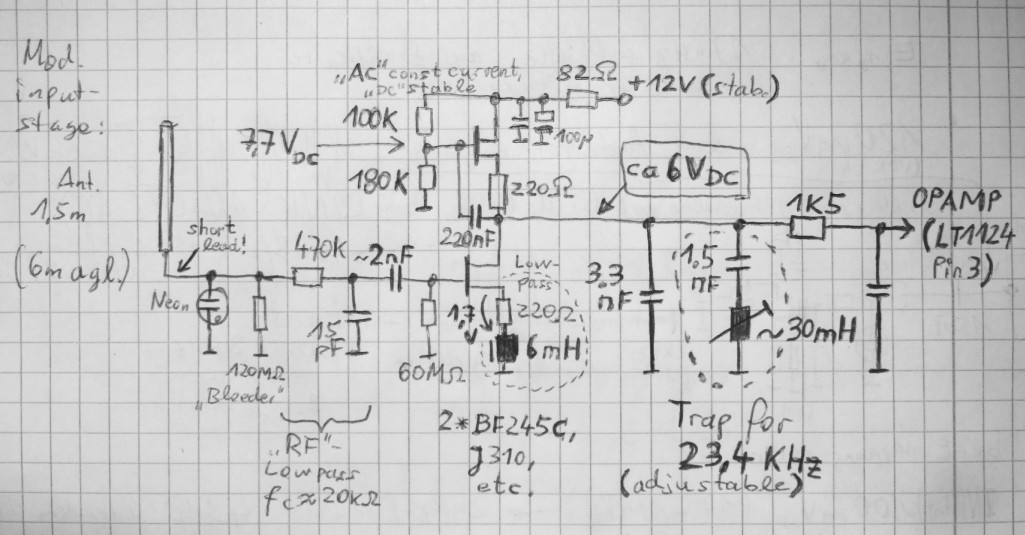

List of the VLF/LF radio signals sampled by each receiver of the network. By implementing adaptive cancellation of atmospheric noise, the SNR of the received signal will be enhanced as much as 6dB at the VLF receiver. A high sensitivity very low frequency (VLF) receiver is developed based on AD744 monolithic operational amplifier (Op-Amp) for earthquake data acquisition. in the radio signals related to the transmitters, receivers, me. Its function is to match the antenna impedance to the third part of the. The second part is the input transformer. This is different from a standard radio dipole antenna that senses the electric field. The diagram is similar to the ADA (active differential antenna) described at And, in the shack, the UHF FM receiver. The first is the antenna, which is typically a loop antenna used to sense the magnetic field. For EM16 surveys, the TX27 antenna consists of a long (typically 1 km) grounded wire.ĮM16: inphase and quadrature components of the secondary VLF field, as percentages of the primary fieldĮM16R: apparent resistivity in ohm-metres, and phase angle between Ex and HyĮM16R: Stainless-steel electrodes, separated by 10 m: impedence of sensor is 100 MΩ in parallel with 0.Atmospheric Noise Cancellation for Low Frequency (LF) and Very Low Frequency (VLF)Īret‚ Associates proposes improving VLF channel capacity, bit error rate, and range of operations for submarines and supporting aircraft. The VLF receiver front-end consists of three parts.
#What is a vlf receiver portable#
The TX27 is a portable VLF transmitter supplying a VLF field for surveying with either the EM16 or EM16/16R if remote broadcasts are weak, intermittent or poorly coupled with the target. Although this is intended for audio, the fact that its a digital processing circuit, making use of a sampling technique, means that one can use it for processing RF signals. On outcome is that for single locations of VLF receivers the daily and annual.

In addition, the EM16/16R can map resistive alteration for gold exploration. The hardware used for the VLF receiver is the Realtek sound chip on my Asus motherboard. Both single and multi-frequency GNSS receivers suffer from the ionospheric.

The combined EM16/16R instrument can detect a second earth layer if the layer occurs within the VLF skin-depth. You can hear sferics, tweeks, whistlers and other VLF radio sounds at any time of the day, but the hours around dawn. The EM16R Resistivity Attachment uses a pair of electrodes to measure the apparent resistivity of the earth. If you follow the instructions carefully you should be successful in building a receiver that works. The EM16 has discovered several base and precious-metal ore bodies and many water-bearing fractures and faults. The INSPIRE VLF-3 receiver kit is NOT a simple electronic assembly. Local tilt and ellipticity of VLF broadcasts are measured and resolved into inphase and quadrature components of VLF response. There are many different reasons why these types of faults could occur, but during VLF Cable Testing for a particular fault type, technicians will often try to determine if it’s a problem with the cable or one of its connections. Audio Output: Maximum 100 mW into 16-Ohm stereo headphones. For instance, if you set up a radio receiver just about anywhere on Earth. RFI protected via input LC filter to reduce/eliminate LF-VHF broadcast and utility station overload and IMD. ELF/VLF stands for Extremely Low Frequency and Very Low Frequency, and refers. This receiver is very flexible in setup and has the controls and enhancements necessary to make recordings that can be properly logged for further study. 1.5 kHz with roll-off below 400 Hz and above 2 kHz. INSPIRE VLF-3 Receiver The INSPIRE VLF-3 is the third version of the popular receiver used by students and others to observe Natural Radio and other Low Frequency emissions.

Existing receivers were designed in the 1970s and 1980s to accomplish this task in specific environment and against specific threats. WR-3 VLF RECEIVER SPECIFICATIONS: Receive frequency range: 0.1-12 kHz (100 - 12,000 Hz) Basic WR-3: peak frequency approx. The EM16 VLF Receiver is the most widely used electromagnetic geophysical instrument of all time. VLF Cable testing is a way to identify problems in the cable itself and the connections. ABSTRACT: Current and future VLF receiver technology for Emergency Action Message (EAM) reception must meet stringent reception capabilities in harsh environments.


 0 kommentar(er)
0 kommentar(er)
